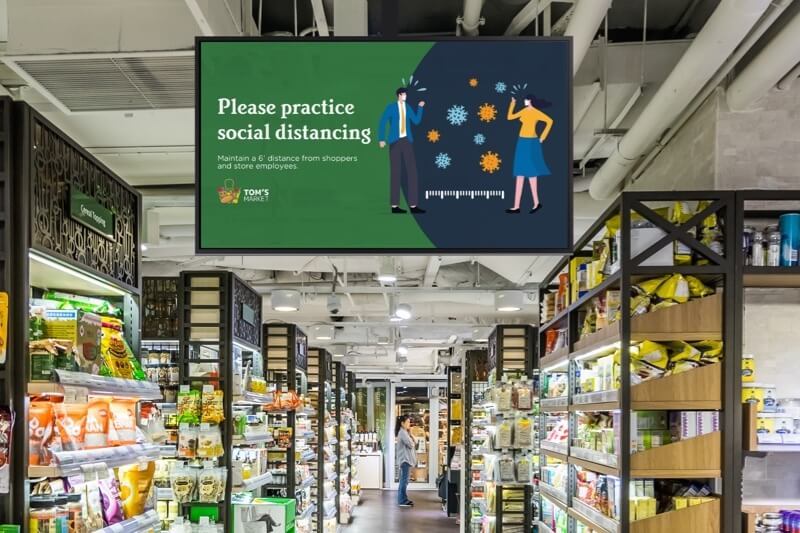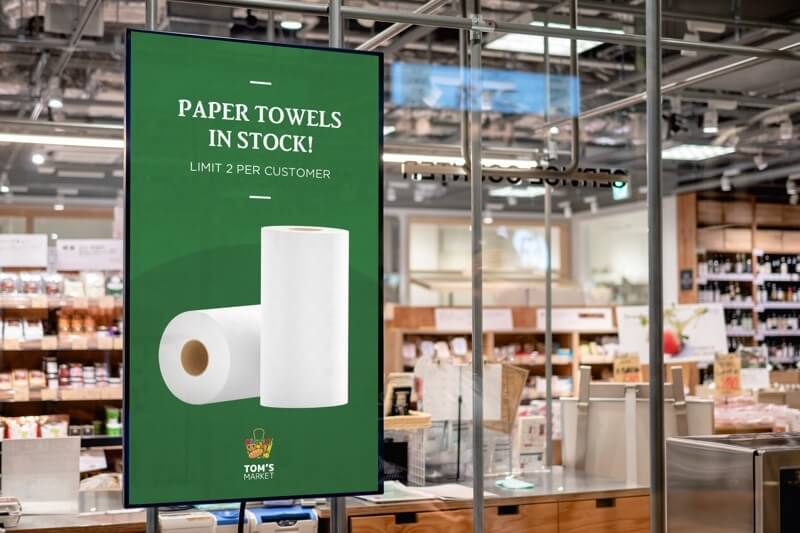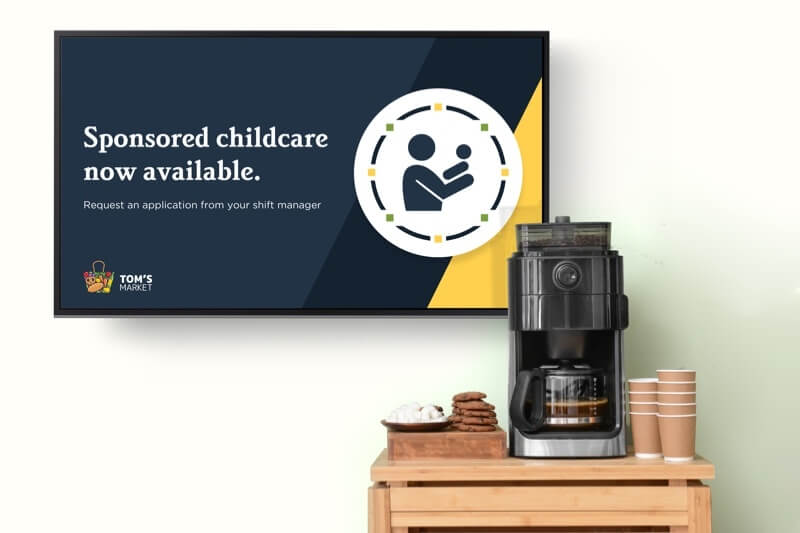
As the COVID-19 virus spreads around the world, staying at home and avoiding others has become the most helpful and important thing people can do to slow the outbreak. In fact, according to Professor Gerardo Chowell, co-author of a study that uses statistical modeling to investigate how coronavirus spreads:
Implementing strong social distancing measures is the only way to stop the virus from spreading.
With an estimated one in four carriers asymptomatic, many people may have the virus and not know it. In response, organizations across the world are directing their customers and employees to practice social distancing. But often this is easier said than done, especially since everyone needs supplies eventually.
Grocery shopping is a necessary activity, so visiting the supermarket is considered a valid reason to leave your home. Still, it is imperative for everyone — customers and employees alike — to practice social distancing in grocery stores.
Without everyone following these precautions, people could contract COVID-19 at grocery stores. And yet, when people are scared they can become forgetful. So, if you work in or manage a grocery store, how can you enforce physical and social distancing and play your part to ensure community safety?

What Grocery Stores are Doing
Every grocery store in the world needs to take measures to reduce the spread of COVID-19. Governor Mike DeWine of Ohio asked state stores to limit the number of people allowed inside at the same time, but it is up to each store to decide exactly what the limit is. For instance, Country Fresh Farm Market in Hartwell, is permitting 20 individuals inside at any given time, while Costco is only allowing two customers per membership card to enter.
Walmart is only allowing five customers inside its stores per 1,000 square feet. Associates are marking queue lines at a single-entry door (where they are admitted one at a time and counted) and directing customers to leave through a separate exit. Likewise, Walmart is enforcing one-way movement through its aisles with direction from employees and floor markers to reduce the potential for close contact.
Employee direction helps ensure that people remain at least six feet away from each other, but grocery stores are also relying on signage to communicate these messages and enforce them. While some grocery stores are using handwritten signs or print out flyers, they can get greater benefits from digital signs that are more noticeable and easier to update as guidelines change.
How Grocery Stores Can Utilize Digital Displays
If your grocery store has TV screens available, you can put them to use by taking advantage of digital signage software to compliment your in-store messaging. Here are a few ideas:
Position it Outside the Store
There is a range of things you can do with a digital sign placed near your store’s entryway. As you and your employees count the number of people entering and exiting, you can update the sign in real-time to reflect the number of shoppers currently inside the building so that you don’t lose track. You can also display an approximate wait time for customers in line so that they know how much longer it will be before they can shop.

Communicate Rules and Regulations
Your store should be taking the necessary steps to ensure people’s safety, but you need to communicate what the new rules and regulations are so people can follow them. For example, are you imposing limits on the number of products customers can purchase? You can use digital displays to let shoppers know that they cannot buy more than two packages of something at a time.
Are you refusing to accept returns during the pandemic because you do not want to restock items people’s hands have been touching? Digital signage can convey this, too. Digital displays are also useful for the same purposes physical signs are: marking how far apart people are to stand, designating spaces shoppers are or aren’t allowed in, noting which direction traffic should flow in particular aisles, signifying which exits customers are permitted to leave through, and announcing other rules your store plans to enforce. You should also designate specific checkout aisles for people with disabilities.
Announce Any Upcoming Changes
Digital displays are an effective way of letting people know if your store intends to implement any additional regulations and changes. Will you only be open to senior citizens for the first hour or two in the morning? Are your hours of operation shifting? Unlike traditional signage, messages displayed on screens in your store can be updated automatically, so they always show the most accurate and relevant information.

Communicate With Your Employees
Your employees are essential workers, which means they are very at-risk of contracting COVID-19. Use digital displays in the break room to communicate with them: How are you protecting their safety just as much as customers’? Do you have announcements to make regarding paid sick leave, early access to wages, or schedule changes? Printed signs must be changed onsite to reflect updates, but digital signs can be updated remotely to provide your employees with relevant information in an instant.
You can use digital displays to let your employees know of any wage raises and changes to health insurance, too. While you can communicate the details of new initiatives via email, digital signs are a great way to raise awareness and adoption. Your employees need and deserve adequate healthcare coverage, a minimum of two weeks paid sick leave)\, easily accessible childcare, masks and gloves, and supplemental pay for excessive hours and hazardous conditions). Your employees are not “just grocery store workers” — they are keeping society running and everyone fed.
Share Live Updates on Items
Here’s something your employees and customers will appreciate: provide live updates of what items are in and out of stock. Shoppers are searching for their familiar purchases only to find them gone. Your employees are exhausted from fielding the same question, ”Is X item in stock, and if not, when will you have more?” A digital display that informs shoppers and staff members what items are out of stock will save everyone a lot of time.
Remind Everyone of Hygiene Etiquette
People are hopefully paying attention to the news, but if not, you can use digital displays to remind everyone of proper hygiene etiquette. Encourage shoppers and employees to wear masks, not touch their faces, wash their hands often, avoid too-close contact with people, stay home when not at the grocery store, and take other precautions.
Though everyone should stay at home most of the time during this crisis, grocery stores are one of the places where people are most likely to come into contact with one another. Grocery stores must be as communicative as possible. Digital displays, such as those from Enplug, can help markets enforce the CDC’s social distancing guidelines and relay other essential messaging. Besides encouraging social and physical distancing, grocery stores also need to take additional steps to prevent COVID-19 from spreading, such as installing barriers near the cash register and sanitizing carts and other surfaces frequently.